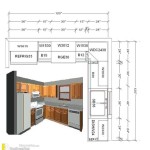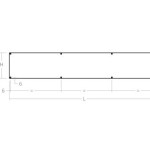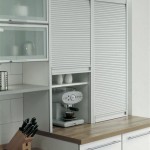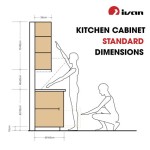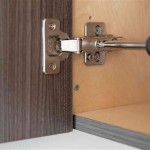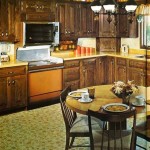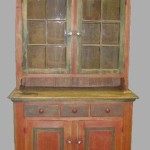Selecting the Perfect Paint Color for Kitchen Cabinets: A Comprehensive Guide
The kitchen often serves as the heart of a home, and kitchen cabinets play a pivotal role in defining its overall aesthetic. The color of these cabinets significantly impacts the room's ambiance, functionality, and perceived value. Choosing the right paint color, therefore, becomes a crucial decision, requiring careful consideration of various factors, including the existing décor, natural light, and desired style. This article aims to provide a comprehensive guide to navigating the process of selecting paint colors for kitchen cabinets, offering valuable insights to make an informed choice.
Understanding the Impact of Color Psychology on Kitchen Ambiance
Color psychology explores the emotional and psychological effects of different colors on human behavior and perception. When choosing a paint color for kitchen cabinets, it’s beneficial to understand how each color family might influence the atmosphere of the space. For instance, warm colors like yellows, oranges, and reds can create a sense of energy, warmth, and sociability, making them suitable for kitchens intended as gathering spaces. However, these colors can also be overwhelming if used excessively, particularly in smaller kitchens.
Cool colors, such as blues, greens, and purples, tend to evoke feelings of calmness, serenity, and spaciousness. Light shades of these colors can make a small kitchen feel larger and airier. While blue is generally considered a sophisticated and calming color, some shades might feel cold or unappetizing in a kitchen setting. Green, associated with nature and freshness, can create a relaxing and inviting atmosphere. Purple, often linked to luxury and creativity, can be a bold choice for kitchen cabinets, but lighter shades like lavender can add a subtle touch of elegance.
Neutral colors, including white, gray, beige, and greige (a blend of gray and beige), offer versatility and timeless appeal. White is a classic choice that brightens the kitchen and creates a clean, modern look. However, it can also show dirt and wear more easily than darker colors. Gray is a sophisticated and adaptable neutral that can complement various design styles. Beige and greige provide warmth and softness, making them suitable for creating a cozy and inviting kitchen.
Evaluating Existing Elements and Architectural Style
The selection of paint colors for kitchen cabinets should not be made in isolation. The existing elements of the kitchen, such as countertops, flooring, backsplash, and appliances, must be taken into account to create a cohesive and harmonious design. The color of the countertops, for example, can significantly influence the choice of cabinet color. If the countertops are dark or feature a prominent pattern, a lighter cabinet color can help balance the overall look and prevent the kitchen from feeling too heavy. Conversely, if the countertops are light and neutral, a bolder cabinet color can add visual interest and personality.
The architectural style of the home also plays a vital role in determining the appropriate cabinet color. For a traditional or farmhouse-style kitchen, warm and classic colors like white, cream, or light gray may be suitable. These colors complement the characteristic features of traditional kitchens, such as raised-panel cabinets, intricate moldings, and natural wood accents. For a modern or contemporary kitchen, bolder and more unconventional colors, such as navy blue, dark green, or even black, may be appropriate. These colors align with the clean lines, minimalist design, and sophisticated aesthetics of modern kitchens.
Furthermore, the amount of natural light that the kitchen receives should be considered. In a kitchen with plenty of natural light, darker colors can be used without making the space feel cramped or gloomy. However, in a kitchen with limited natural light, lighter colors are preferable, as they reflect light and make the room feel brighter and more spacious. Artificial lighting can also be used to supplement natural light and enhance the appearance of the cabinet color.
Understanding Sheen Levels and Their Impact
Beyond color, the sheen level of the paint also plays a significant role in the overall appearance and durability of kitchen cabinets. Sheen refers to the amount of light that the paint reflects, and it ranges from flat or matte to high-gloss. Each sheen level has its own advantages and disadvantages, and the appropriate choice depends on the desired aesthetic and the level of wear and tear that the cabinets will experience.
Flat or matte paint has the lowest sheen level, offering a non-reflective finish that is ideal for hiding imperfections and creating a soft, elegant look. However, flat paint is less durable and more difficult to clean than higher sheen levels, making it less suitable for kitchen cabinets, which are prone to spills and splatters. Eggshell paint has a slightly higher sheen level than flat paint, providing a subtle sheen that is more durable and easier to clean. Eggshell is a popular choice for kitchen cabinets as it offers a good balance between appearance and functionality.
Satin paint has a higher sheen level than eggshell, offering a smooth, velvety finish that is more resistant to stains and scuffs. Satin is a good choice for high-traffic areas, such as kitchens with children or pets. Semi-gloss paint has an even higher sheen level than satin, providing a durable and easy-to-clean finish that is ideal for trim and cabinets that are frequently touched. However, semi-gloss paint can highlight imperfections and is not suitable for cabinets with uneven surfaces. High-gloss paint has the highest sheen level, offering a shiny, reflective finish that is extremely durable and easy to clean. High-gloss paint is often used for modern or contemporary kitchens to create a sleek and dramatic look. However, it can also be overwhelming if used excessively and can highlight imperfections.
Exploring Color Palette Options and Color Harmony
Developing a cohesive color palette is essential for creating a visually appealing and harmonious kitchen. The color palette should consist of a main color, one or two accent colors, and a neutral base color. The main color is typically used for the kitchen cabinets, while the accent colors can be incorporated through accessories, backsplash, or wall paint. The neutral base color provides a backdrop that ties the entire palette together. There are several approaches to developing a color palette, including monochromatic, analogous, complementary, and triadic color schemes.
A monochromatic color scheme involves using different shades and tints of a single color. For example, a kitchen cabinet could be painted in a light gray, while the backsplash is a darker shade of gray, and the accessories are in a very light almost white hue. Monochromatic schemes create a sense of unity and tranquility, but they can also lack visual interest if not executed carefully. An analogous color scheme involves using colors that are adjacent to each other on the color wheel, such as blue, green, and turquoise. Analogous schemes create a harmonious and soothing effect. Complementary color schemes involve using colors that are opposite each other on the color wheel, such as blue and orange or red and green. Complementary schemes create a vibrant and dynamic contrast, but they can also be overwhelming if not balanced properly.
A triadic color scheme involves using three colors that are evenly spaced on the color wheel, such as red, yellow, and blue. Triadic schemes create a bold and playful look, but they require careful planning to ensure that the colors complement each other. Online tools, such as color palette generators, can assist in exploring different color combinations and visualizing how they might look in a kitchen setting. Additionally, obtaining paint samples and testing them in the actual kitchen environment is crucial for making an informed decision. The appearance of paint can change depending on the lighting conditions and the surrounding colors.
Considering Hardware and Accessories
The hardware and accessories chosen for kitchen cabinets can significantly impact the overall look and style of the space. Hardware, such as knobs, pulls, and hinges, can be a subtle yet effective way to enhance the cabinet color and complement the overall design. The finish of the hardware should be carefully considered in relation to the cabinet color. For example, silver or chrome hardware can complement cool colors like white, gray, or blue, while brass or bronze hardware can complement warm colors like cream, beige, or green.
The style of the hardware should also align with the architectural style of the kitchen. For a traditional kitchen, ornate or vintage-inspired hardware can add a touch of elegance. For a modern kitchen, sleek and minimalist hardware can enhance the clean lines and contemporary aesthetic. Accessories, such as lighting fixtures, window treatments, and decorative items, can also contribute to the overall color scheme and style of the kitchen. By carefully coordinating the hardware and accessories with the cabinet color, a cohesive and visually appealing kitchen can be created.
Ultimately, selecting the perfect paint color for kitchen cabinets is a multifaceted process that requires careful consideration of various factors. By understanding the impact of color psychology, evaluating existing elements, considering sheen levels, planning a cohesive color palette, and coordinating hardware and accessories, one can create a kitchen that is both aesthetically pleasing and functionally efficient.

How To Choose Kitchen Cabinet Paint Colors

14 Kitchen Cabinet Color Combinations To Try

How To Choose Kitchen Cabinet Paint Colors

14 Kitchen Cabinet Color Combinations To Try

14 Kitchen Cabinet Color Combinations To Try

14 Kitchen Cabinet Color Combinations To Try

35 Kitchen Color Schemes For 2024 Cabinet Kings

How To Choose Kitchen Cabinet Paint Colors

What Color Should I Paint My Kitchen Cabinets Expert Cabinet Painting Textbook

What Color Should I Paint My Kitchen Cabinets Expert Cabinet Painting Textbook

